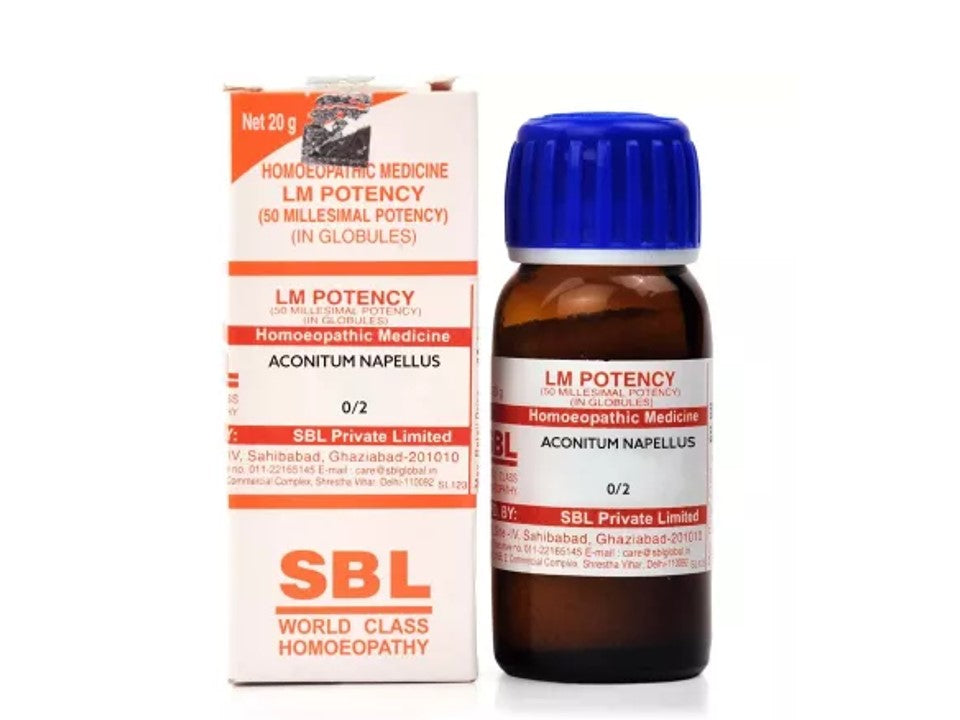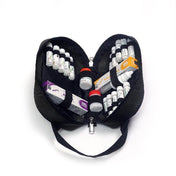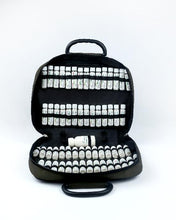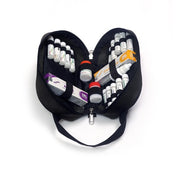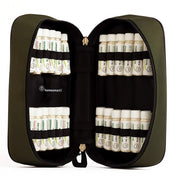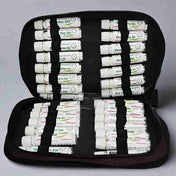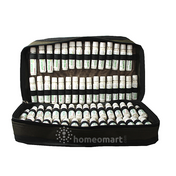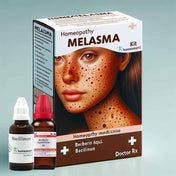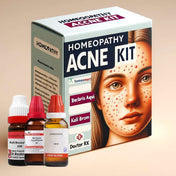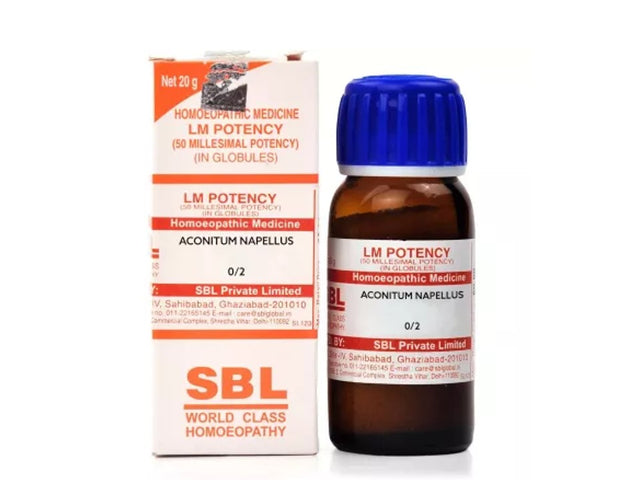Aconitum napellus LM Potency Dilution
Aconitum napellus LM Potency Dilution - 1/2 Dram (1.6 Gms) / 0/1 is backordered and will ship as soon as it is back in stock.
Couldn't load pickup availability
Description
Description
Synonym: Aconite Napel
High temperature, coryza, dry cough, headache, colic, anxiety, piles.
Clinical Indications of Aconite Napellus:
Aconite Napellus is indicated for symptoms associated with anxiety, fright, physical and mental restlessness, fear and nervous excitement. There is suddenness of all complaints, result of shock or fright.
Aconite Napellus has fear of death, fear of darkness, fear of bed, fear of ghosts, and fear of going out in crowd. The patient also predicts the date and even hour of death. The patient is very much restless and does everything in great haste. Mental anxiety, tension, worry and fear accompany most of the trivial ailments.
Aconite Napellus is a wonderful nerve tonic and also useful shock absorbent.
Aconite Napellus is also useful in cold and flu caused by exposure to dry, cold weather, draught of cold air, checked perspiration, also complaints from very hot weather, especially gastro-intestinal disturbances,etc. First remedy in inflammations, inflammatory fevers.
Tension of arteries; emotional and physical mental tension explain many symptoms. When prescribing Aconite remember Aconite causes only functional disturbance, no evidence that it can produce tissue change -its action is brief and shows no periodicity. Its sphere is in the beginning of an acute disease and not to be continued after pathological change comes.
Aconite Napellus also helps in treating bad effects of checked perspiration, fear, fright, heat of sun, shock, and excitement. There is sudden attack of fever with high rise of temperature. There is no periodicity what so ever. During the fever the face of the patient is red or pale and red alternately. The patient feels much thirst during fever. There is burning thirst for large quantities of cold water.
It is also useful for sudden inflammatory condition in any part of the body.
Patient Profile: Aconitum Napellus LM potency medicine
Mind: Fear and predicting death. Convinced they will die, predict the time. Fear of death during pregnancy, labor.
Fears Crowd, Narrow places, open spaces, darkness, elevator, tunnel, heart-disease, heart will stop, brainstroke, fainting, air plane, earthquake.
Fearful restlessness.
Panic states: Sudden, violent. Like internal earthquake with palpitations, red face, vertigo, one sided numbness, faintness, perspiration, trembling, dyspnea.
Generalities: Extreme excitability of nervous and vascular system.
Desire open air.
Agg. cold dry weather, dry cold wind, east wind.
Agg. becoming cold when overheated.
Agg. Motion; lying on affected side; touch (especially during fever).
Agg. fright, shock; experience of imminent death.
Agg. Twilight.
Amel. Discharges (vomiting, diarrhea).
Plethoric (excessive) local congestions.
Epilepsy or convulsions.
Numbness, tingling agg. left side.
Intolerable pains; stinging, burning. Protects painful part with hands.
Vertigo: During panic.
On rising, on attempting to sit up in bed.
Head: Tormenting headaches, agg. occiput and forehead, with fear of death;after fright; exposure to cold.
Congestion and fullness, agg. evening; as if enlarged.
Sensation of boiling inside.
Eye: Intra-ocular hemorrhage, agg. trauma (Arn, Ham).
Nose: Conjunctivitis from cold, dry wind, reflection of snow. Inflammations from injury (Symphytum).
Hot and dry. Red conjunctiva of lids. Profuse lachrymation. Lids hard and swollen.
Photophobia from sunlight.
Eyeballs feel enlarged.
Loss of vision after fright, very cold or hot weather.
Ear: External ear hot and red; painful sensitivity; noise intolerable.
Nose: Acute smell for unpleasant odors.
Epistaxis(bleeding from nose); bright red.
Face: Anxious expression.
Neuralgia, paralysis after dry, cold wind, agg. left side.
One cheek red, one pale (Cham).
One-sided numbness.
Pale on rising, with faintness.
Mouth: Numbness and tingling of tongue and lips. Burning.
Everything tastes bitter except water.
Teeth: Grinding.
Pain from dry, cold wind; during pregnancy.
Throat: Acute inflammations with high fever, dark redness, burning and stinging.
Swallowing difficult.
Stomach: Gastritis from drinking cold water when overheated.
Thirst for large quantities (cold water).
Burning pain extending to mouth.
Pressure as from a stone, extending to back.
Abdomen: Acute hepatitis. Splenitis (Inflammation spleen).
Severe colic with green, watery stool, amel. after stool.
Tympanitic swelling, burning hot, painful to touch, agg. umbilical region.
Urinary: Retention of urine in newborns, from fright; from cold, esp. children, with crying and restlessness.
Frequent urination during crisis.
Male genitalia: Acute orchitis (inflammation of testicles).
Female genitalia: Acute inflammation ovaries from suppressed menses.
Suppressed menses, dysmenorrhea from fright, becoming cold.
Abortion from fright.
Larynx/trachea: Croup, in early stage; after cold, dry wind.
Larynx sensitive to touch, inspired air; as if raw.
Respiration: Hyperventilating with a croupy sound, agonizing, with fear of suffocation.
Dyspnea (breathlessness) from fright, cardiac excitement.
Psychogenic dyspnea (Lobelia).
Cough: Short, dry, hoarse, barking, forcible; from irritation in throat.
Chest: Palpitations, with anxiety and fear of death, restlessness; as if boiling water in chest. As if heart will explode.
Angina. Intense pain in all directions, esp. down left arm; with numbness and tingling.
Pneumonia, pleurisy.
Stitches in right side, agg. lying on right side, motion, coughing, breathing.
Extremities: Acute rheumatism with sensation of enlargement of the part.
Affections often associated with numbness, tingling.
Paralysis, from exposure to cold, dry wind, from fright; hysterical.
Paralysis on waking, unable to move, gives panic.
Sleep: Restless.
Nervous sleeplessness, with anxiety, restlessness.
Nightmares, instead of panic-attack.
Position: Left side.
Fever: High fever.
Skin: Jaundice in new-borns.
Dry.
Red rashes, agg. Sun heat.
Fine prickings as from needles. Tingling.
About LM potency homeopathy medicines
In the sixth edition of ‘Organon’ Dr. Hahnemann had introduced a new system of dilution and potentization and called it “renewed dynamisation” with a diluting ratio of 1:50,000. It was named as 50 millesimal potency or LM potency by Dr. Pierre Schmidt. In some parts of the world, it is also called as Q potency. It soon got professional acceptance. As on date, it is recognized by different homoeopathic pharmacopoeias including American and Indian.
What are they and how are they denoted?
These homoeopathic potencies are prepared in the diluting scale of 1:50,000 and denoted as 0/1, 0/2, 0/3…..etc. They are generally used up to 0/30.
Perceived advantages
- Highest development of power at each potency level.
- Mildest reaction – no medicinal aggravation.
- Frequent repetition is permitted; every hour or oftener in urgent cases.
- Quick cure in chronic cases where it can be given daily or oftener.
- 0/3 is more subtle than 30C or 200C and the 0/30 is sharper than CM as believed by many classical homoeopaths.
LM potency dosage: Generally LM potencies are administered as follows:
- Take a 4oz (120ml) to 6oz (180ml) clean glass bottle. Fill it 3/4th with water. Take 1or 2 globules of the desired potency (often starting at LM 0/1) and place it into the bottle.
- Succuss the bottle just prior to ingestion 1 to 12 times depending on the sensitivity of the patient. This slightly raises the potency and activates the remedy.
- Take 1, or more teaspoons of the medicinal solution and place it into 8 to 10 tablespoons of water in a dilution glass and stir it. Most cases are started with 1 teaspoon and the amount is increased only if necessary. In children the amount should be 1/2 teaspoon. Infants may only need 1/4 of a teaspoon.
The dosage of the medicinal solution can be carefully adjusted to suit the sensitivity of the individual’s constitution
Note: We dispense SBL LM potency medicines in 1/2, 1 & 2 dram plastic containers, image for illustrative purpose only.


